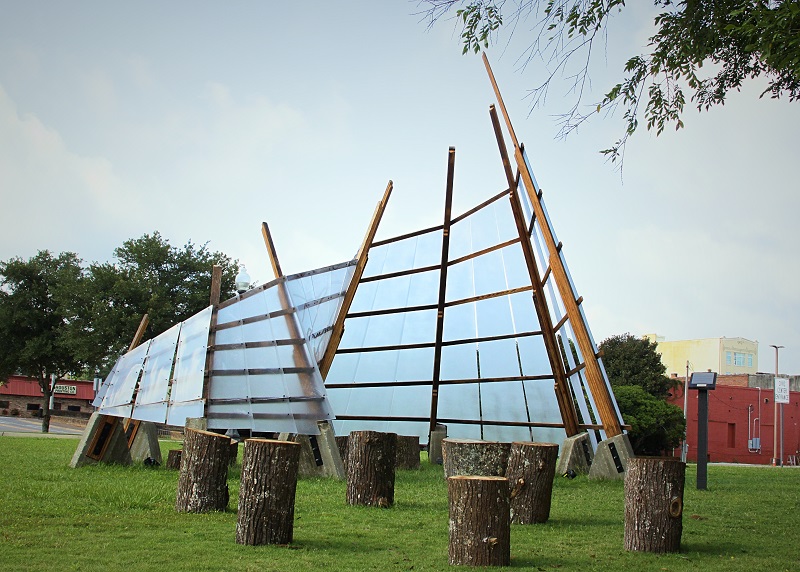Capturing Our Stories
Overview
This lesson will focus on sharing the student’s story or the story of a family member. Through this lesson, students will gain a better understanding of how to capture a story from a living person, which will be preserved on the Wiregrass Museum of Art’s website, StoriesOfTheWiregrass.com.

Essential Question
How can we capture a person's story and share it with our community?
Student Learning Objectives
Students will:
- Ask questions of self or a family member
- Use technology to document the story
- Use technology to create a document with a typed version of the story
- Upload their completed story on StoriesOfTheWiregrass.com
Standards
- Kindergarten: English – W.K.5, W.K.6, SL.K.3; Technology – 10
- First Grade: English – W.1.5, W.1.6, SL.1.3; Technology – 10
- Second Grade: English – W.2.3, W.2.6, SL.2.3; Technology – 10
- Third Grade: English – W.3.7, W.3.8, SL.3.5; Technology – 12
- Fourth Grade: English – W.4.7, W.4.8, SL.4.5; Technology – 12
- Fifth Grade: English – W.5.7, W.5.8, SL.5.5; Technology – 12
- Sixth Grade: English – W.6.3, W.6.6, SL.6.5; Technology – 14
Discussion Prompts
Questions to provide students that can be used for self-capture or in interviewing a family member:
- How has your life turned out differently than you imagined it would?
- What were your favorite cartoons growing up?
- What would you consider your motto?
- How far back can you trace your family ancestry?
- What is one of the craziest things that’s ever happened to you?
- What is one of the most memorable trips you’ve been on?
- What was the strangest thing you wanted to be when you grew up?
- What’s your morning ritual?
- What was one of your favorite playground games?
- What are your favorite songs?
- What makes you happy?
- Have you ever given or been the recipient of a random act of kindness?
- What is one of your favorite memories of your mother?
- What was an unusual compliment you once received, but really appreciated?
- Do you have any moving day stories?
- What was something that you believed all through childhood and were surprised to find out was false?
- At what times in your life were you the happiest, and why?
- What is one of the strangest things you’ve ever eaten?
- What’s a food or food combination that you love, which most other people dislike?
- What are your favorite memories of each of your children growing up?
- What was the neighborhood you grew up in like?
- Did you consider any other careers? How did you choose?
- What are some of your childhood accomplishments?
- What is your best advice when it comes to work?
- What personal expectations do you hold yourself to?
- Who are the funniest people in your family?
- Tell me about a kitchen disaster you once had.
- Did you ever take any great road trips?
- What makes you happy?
- Are you a morning person or an evening person?
- What are your favorite possessions? Why?
- Did anyone in the family play a part in History with a capital “h"?
- What qualities do you most value in your friends?
About the Artist
Jason Schmidt is a local architect with the firm Bradley & Schmidt Architecture. Mike Riddle is the Creative Director at PushCrankPress.
Materials
Notebook and pencil, access to recording equipment (phone, recorder, camera, etc.), access to a computer
Instructions
Students will need to decide who they will interview, themselves or a family member. Once they have decided, they will select questions to ask to be able to capture a story, such as a memory.
Selecting from the questions under “Discussion Prompts”, students will document the answers using a video or audio recording. This will ensure that their responses are accurate when transcribing the audio later on.
While giving the questions, encourage the person being interviewed to provide as much detail as possible. The more your audience knows, the more they will be engaged. For example, “I remember Grandpa always took very nice care of things.” If she had stopped there, the statement about Grandpa may still have been true, but it became much more memorable when she added this detail: “If he used the weed eater, he’d wipe it off and put it back in the box.”
If possible, take a picture of the person you are interviewing. An old photo can also be used from when they were younger or a photo from the memory they are sharing.
Using Microsoft Word or Google Docs, students will write out their recorded story.
Once students have documented the story in the word document, they should download and save as a PDF. Once downloaded, the document can be uploaded to StoriesOfTheWiregrass.com
To upload a document to StoriesOfTheWiregrass.com, follow these steps: On the home page, select the green button “Tell Us Your Story”. On the new page you have blanks to fill out: Name (it is okay to only include the first name or you can remain anonymous), Email (optional), County (i.e. Houston), Age, and Story (optional).
Click the box “I would like to include an image, video, or audio.” From there, you can select PDF and upload your file! Once you submit, your story will be on the website within 5 business days.
Terms
Who is part of your immediate family?
- Mother
- Father
- Children
- Sister
- Brother
- Grandmother
- Grandfather
Resources
- https://www.familysearch.org/blog/en/9-tips-personal-family-stories/
- https://www.allprodad.com/how-to-capture-your-family-story/
